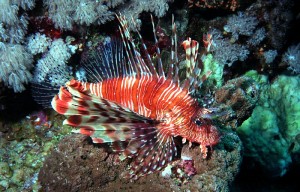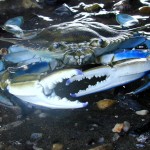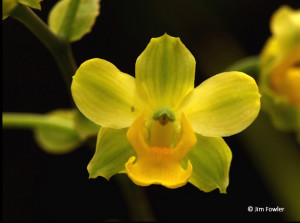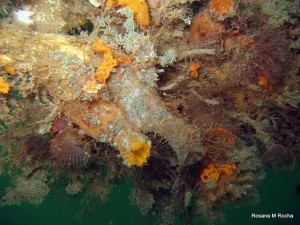by Cora Johnston
This just in: Invasive and venomous lionfish (Pterois volitans) have just been spotted in mangroves along Florida’s Atlantic coast! We encountered two individuals of this invasive species (they’re native to the Indian and Pacific Oceans) while conducting snorkeling fish surveys along the Indian River Lagoon.Archives
...now browsing by author
Mangrove Tracking II: Invasive Lionfish
Monday, June 18th, 2012Chesapeake Blue Crabs: The Shaky Recovery
Wednesday, June 13th, 2012by Tuck Hines
Few creatures in Chesapeake Bay have experienced the kind of whiplash felt by the blue crab. Having gone through a near-disastrous decline that lasted almost two decades, they made a dramatic comeback starting in 2009. But before managers could proclaim it a success, the numbers fell again. And this time, the reasons aren’t so clear.
Aging Forests Better at Trapping Carbon
Friday, June 8th, 2012by Kristen Minogue
Mysterious things happen to forests as they grow old. The passing of time alters the trees, the animals, the microbes, even how much they breathe.
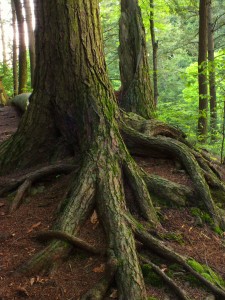
Hemlock tree in Salt Springs State Park, Penn. Hemlocks are one of the last trees to populate a forest, and those forests seem to be better at storing carbon. (Nicholas_T)
Just like people, forests age. Dense rows of birch and cherry trees give way to tulip poplars. Eventually the tulip poplars vanish and more spacious oaks and hemlocks rise up in their place. But arguably the most important changes occur underground. The planet’s soils store more than three times as much carbon as the atmosphere. And—while researchers still aren’t sure exactly why—older forests seem to be better at holding onto it.
Mangrove Tracking I: A Forest on the Move
Wednesday, June 6th, 2012by Dan Gruner
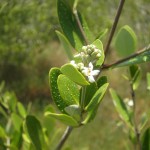
Black mangrove. Mangroves like this tolerate hot, salty environments partly by exuding excess salt onto their leaves. (John Parker)
I don’t think anyone believes that will happen. However, it does seem that mangroves are moving up in latitude, encroaching into more temperate salt marsh systems dominated by cord grass and other herbaceous species. Although mangrove systems are in steep decline worldwide because of coastal development, aquaculture and other human activities, climate change and other factors may be increasing their total geographic range.
Why would this happen? What would this mean for coastal ecosystems in the USA and globally? And what would it mean for the billions of people who live within 20 miles of a coastal zone, or the billions more who rely on some form of oceanic protein?
Dirty Little Secrets of Bloodworms
Wednesday, May 23rd, 2012by Monaca Noble

Arthur Carlton-Jones, the Boy Scout who encouraged fishermen to throw unused bait in the trash. (Photo: Michael Carlton-Jones)
“Free live bait!”
Those were the words that echoed out during August and early September of last year, when the Marine Invasions Lab at the Smithsonian Environmental Research Center (SERC) gave away hundreds of bags of bloodworms to Maryland fishermen. We’re doing it again this spring. Why would an environmental research center give away hundreds of dollars worth of worms?
The Underwater War on Climate Change
Monday, May 7th, 2012by Kristen Minogue
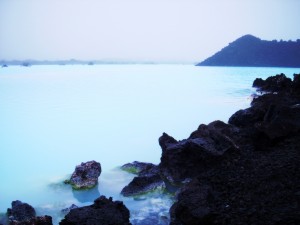
The milky blue waters of this Iceland lagoon are teeming with cyanobacteria, also known as blue-green algae. (Marie-II)
Beneath the surface of the ocean, an invisible army of workers is fighting to keep climate change in check. Many have been silently absorbing or burying carbon for billions of years, and humanity has just begun to take notice of them. These unassuming laborers are bacteria.
Top Nature Poems Under 100 Words
Thursday, April 26th, 2012It’s national Poem in Your Pocket Day, and brevity has been the soul of wit since (approximately) 1603. We’re celebrating by showcasing some of the shortest nature poems in the history of the written language.
Nature rarer uses Yellow
Than another Hue.
Saves she all of that for Sunsets
Prodigal of Blue
Spending Scarlet, like a Woman
Yellow she affords
Only scantly and selectly
Like a Lover’s Words.
-Emily Dickinson (1830-1886)
Click to continue »
The Hidden Eyes of Blind Cats
Monday, April 9th, 2012by Samantha Reed
Cats don’t need their eyes to see in the dark. It turns out they have something even better. This spring, 12-year-old SERC student Samantha Reed decided to find out if the same thing could help humans.
Click to continue »
The Grass That Glued Itself to Maryland
Monday, April 2nd, 2012by Kristen Minogue
Fourteen years ago, a green, hairy and incredibly sticky plant appeared in a Maryland park. Now it has biologists all over the state worried. But does this South Asian forest grass have what it takes to be a serious invader?
Click to continue »
The Beautiful World of Sea Squirts
Thursday, March 15th, 2012by Kristen Minogue
Tunicates. Ascidians. Filter-feeders. Sea grapes. Sea squirts. They go by many names, all describing some of the most colorful invaders in the ocean. A photo gallery from the marine invasions lab offers a glimpse of the most stunning.

